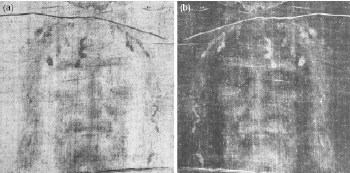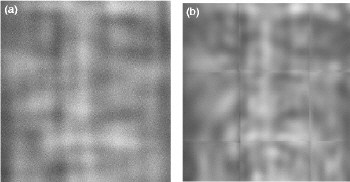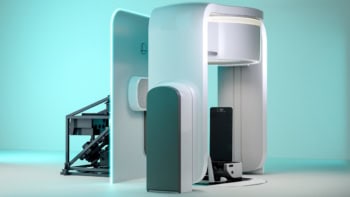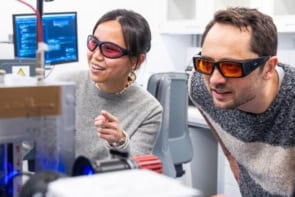Italian scientists have discovered that the back of the Turin Shroud has the image of a man’s face - and possibly his hands – impressed upon it. Giulio Fanti and Roberto Maggiolio of Padova University used various image-processing techniques to enhance the faint features that can be seen in photographs of the Shroud (J. Opt. A6 491). This is the first time the reverse side of the controversial relic has ever been studied.

The Turin Shroud is a piece of linen, some 4.4 metres long and 1.1 metres wide, that contains images of the body and face of a man. The Shroud is believed by many to be the cloth Jesus was wrapped in before being buried. Although the front of the Shroud has been extensively studied, its back has remained hidden beneath another piece of linen, which was sewn on by nuns to cover up damage caused by a fire in 1532. However, this protective layer was removed in 2002, allowing the back of the cloth to be photographed.
Fanti and Maggiolo have now studied these photographs, together with others taken at various times since the 1930s. Because the images are extremely faint, the duo has used an array of image-processing techniques — including Gaussian filters, Fourier transforms and template matching — to highlight human features.
They found that the face of the man that can be seen on the reverse of the Shroud matches that observed on the front. The image shows faint details of a nose, eyes, hair, beard and moustache (figures 2 and 3). The Italian duo was also able to make out weak images of the man’s hands, but could not produce images of his shoulders or back.
These new findings could help to shed light on the origins of the cloth but are more likely to fuel further debate over it. In 1979, carbon-dating techniques revealed that the Shroud dated from medieval times and therefore could not have been used to bury Christ. However, many scientists have argued that the carbon-dating techniques used to study the Shroud were flawed.
Fanti and Maggiolo are now saying that the Shroud is unlikely to be a fraud because the image of the face is superficial on both sides of the cloth and only involves the topmost fibres of the material. “It is extremely difficult to make a fake with these features,” says Fanti.





